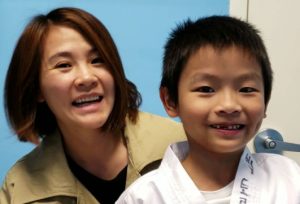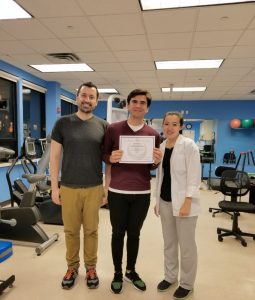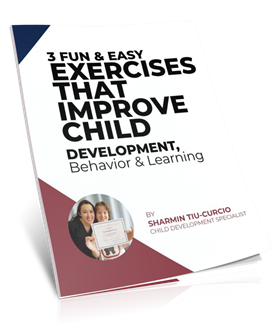Cucumbers and zucchinis are the same, right?
Visually, they look the same, but the two differ in taste, food group designation, and the like.
Whereas dieticians and nutritionists classify zucchinis as a vegetable, some experts disagree on whether to categorize cucumbers as a fruit or vegetable.
How does this connect with today’s topic? On the surface, an occupational and physical therapist seem interchangeable.
Therefore, many patients will have a challenging time explaining the roles and responsibilities of occupational therapy, let alone its differences with physical therapy. Today, we’ll explore the responsibilities, similarities, and differences surrounding both professions.
For instance, a key misconception is that occupational therapy will only treat upper extremities like the shoulder, forearm, and hand. In reverse, physical therapy will only treat lower extremities like the knee and ankle.
In reality, it’s untrue. With that said, let’s begin.

What is Occupational Therapy?
Conceived in the early 1900s as a health profession, we can summarize the aim of occupational therapy in a few words: improve a client’s ability to navigate activities of daily living.
In the profession, we want to help patients function within the environment. With success, you’ll be able to conduct normal daily activities as independently as possible.
Versus an isolated or single issue, occupational therapy offers a holistic approach that treats the whole person. Because of this objective, the profession will address fine and gross motor skills to meet the unique concerns of each patient.
When you hear gross motor skills, think of skills that require the whole body or core muscles such as standing, running, or lifting. As for fine motor skills, this requires smaller muscles like our fingers, wrists, and hands.
When we’re cutting vegetables, writing with a pen, or closing the zipper on a coat, we’re using fine motor skills.
While being treated, occupational therapy will incorporate meaningful activities (occupations) of each patient. Through activities of daily living – also known as ADL’s, occupational therapists will use these activities to promote participation, motivation, and measure the patient’s level of independence.
Essential for one’s daily life, there are six ADL’s: eating or feeding, toileting or toilet hygiene, functional mobility, bathing or showering, grooming or personal hygiene, and dressing.
Toileting or toilet hygiene involves your ability to get to and from the toilet, but it also entails hygienically cleaning oneself. With functional mobility, this refers to your ability to sit, walk, and stand.
For dressing, this refers to your ability to dress, undress yourself, and selecting your clothing. Grooming or personal hygiene includes but not limited to brushing your teeth, combing your hair, washing your hands and face. Bathing or showering which includes scrubbing yourself front and back, washing or shampooing your hair, and drying yourself. Finally, eating or feeding measures your ability to feed yourself, setting up, arranging, and bringing food to your mouth
Based on how each patient conducts these activities, observation will determine what level of therapy to implement.
As part of your therapy, instrumental activities of daily living (IADLs) can offer assistance. Separate from ADLs, instrumental activities of daily living (IADLs) will help observe and measure a greater range of activities for independence.
These are tasks we tend to learn during our teen years such as meal preparation, home maintenance, housekeeping, exercising in the gym, playing golf or recreational sports, feeding your beloved pets or even financial management.
Additionally, occupational therapists will have training with the usage of adaptive equipment. This includes gadgets to assist with getting dressed, grab bars placed inside the shower, or even raised toilet seats.
Because occupational therapy seeks to treat the whole person, treatment works best when it’s customized creatively to fit each patient.
What is Physical Therapy?
At the end of the 19th century, the modern description of physical therapy begins to develop.
To summarize physical therapy, this health profession aims to treat a patient’s specific impairment from a biomechanical position, and it completes this objective by focusing on body movements and physical function.
Physical therapy focuses on body movements and physical function. In combination with strength and muscle tone, physical therapy addresses how individuals move most functionally from point A to point B. Following a diagnosis of an injury, disease or disability, physical therapy is commonly suggested.
Ultimately, physical therapy aims to improve mobility, aligning bones and joints while preventing the need for this: surgery or long durations of medication usage and/or recovery.
SIMILARITIES
From newborns to geriatrics, occupational and physical therapy can offer assistance throughout a patient’s lifespan.
As for location, both professionals will practice in traditional settings like hospitals, inpatient rehabilitation centers, outpatient rehabilitation centers, schools, and even hospice programs.
Additionally, both can practice inside a patient’s home and even mental health facility. What also unites both health professions will include their collaborative work to help patients through caregivers, parents, and even educational staff.
DIFFERENCES
To practice, each profession requires specific educational paths.
To receive one’s board certification, the American Occupational Therapy Association (AOTA) offers certification in the following specialized areas: physical rehabilitation, mental health rehabilitation, pediatrics, and geriatrics.
As for physical therapy, the American Board of Physical Therapy Specialties (ABPTS) will endorse the following areas of clinical practice: clinical electrophysiology, sports, neurology, orthopedics, pediatrics, geriatrics, cardiovascular & pulmonary, and women’s health.
Again, whereas occupational therapy will incorporate functional activity and participation (occupation) to increase independence, they also use different methods to address the injury or problem. Occupational therapy will perform strengthening exercises, stretching, physical activities, and modalities. Treatments can range from soft tissue or joint mobilizations, manual therapy, ice, heat and/or electrical stimulation to promote healing and increase independence to be able to get back to what they love doing the most.
With the help of your primary care doctor, your unique situation will determine if occupational or physical therapy is best. After all, both professions serve a key purpose.
At Occupational Therapy Concept, You’re Family. For a Free consultation, give me a
call at (718) 285-0884 for further evaluation and customized help.



